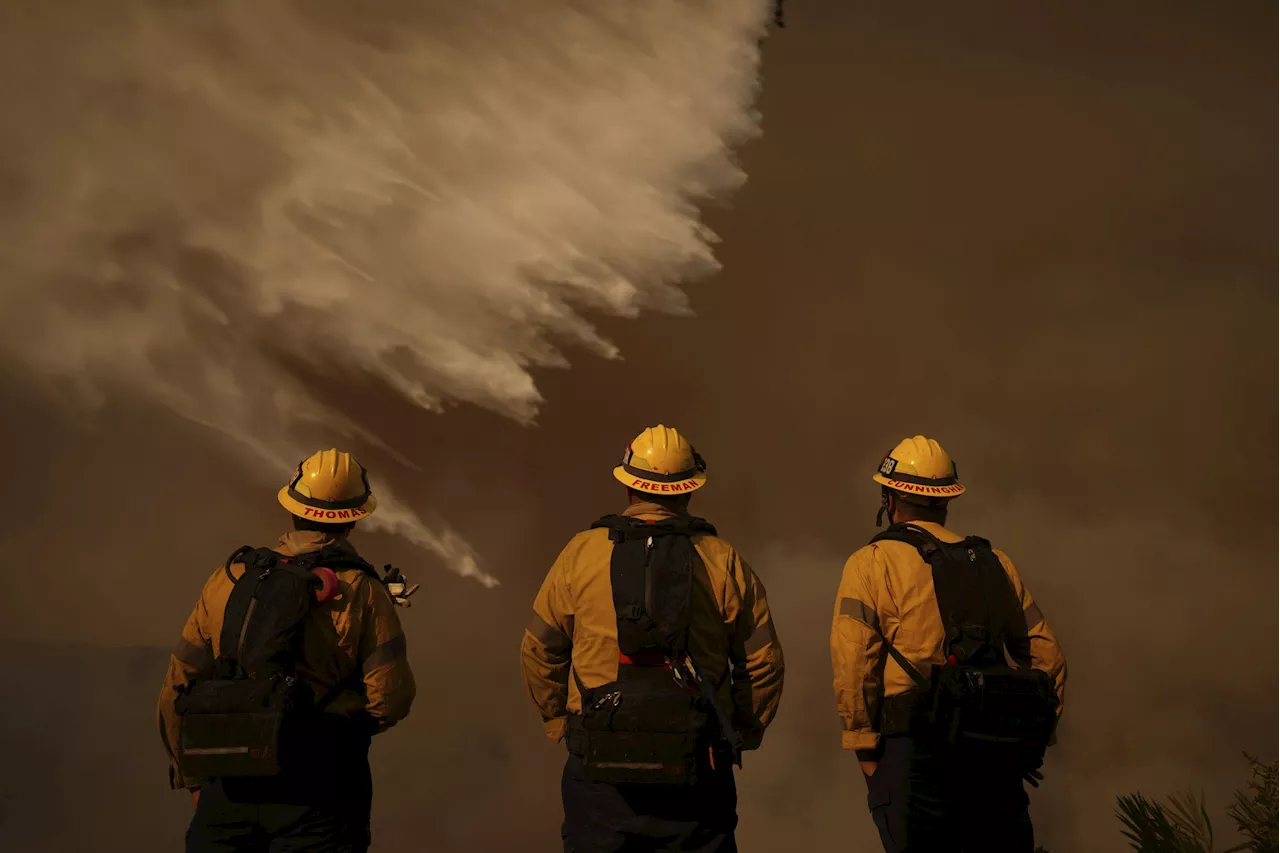As Los Angeles grapples with devastating wildfires, the invisible danger of smoke emanating from burning urban areas is raising serious health concerns.
As Los Angeles enters its second week battling wildfires, growing concerns about the health consequences of the resulting smoke are taking center stage. Unlike typical wildfires that often devastate remote forests and rural areas, California's recent blazes have brought urban destruction into sharp focus.
While the damage to homes and infrastructure is immediately apparent, the invisible threat posed by the smoke from urban fires could have a more insidious impact on residents and first responders.All smoke is harmful, said Rory Hadden, a fire science professor at the University of Edinburgh. Any time you see smoke from a fire, it usually means there are some very nasty substances in it.The smoke from burning vegetation is already hazardous, but urban fires in Los Angeles introduce additional toxins as buildings, vehicles, and other synthetic materials combust. Plastics, in particular, are a major concern. The distinctive smell of burning plastic arises because most plastics contain elements beyond carbon and hydrogen.Some of the hazardous substances that might be present in the smoke include fire retardants, hydrogen chloride, bromine compounds, and hydrogen cyanide—a fatally toxic chemical asphyxiant in high enough doses. Legacy asbestos, still found in older buildings, could also contribute to the toxic mix, according to the Mesothelioma Center, a patient advocacy organization.The Challenge of Measuring Toxicity in the SmokeDespite the dangers, quantifying the full extent of the threat is complex. Tools like the Air Quality Index (AQI) may not capture all the toxic substances released during urban fires, which can vary depending on the materials burning. It's never the poison; it's always the dose, Hadden said. It's difficult to say that smoke from a house is worse than wildfire smoke because it will all depend on how long you're exposed to the cocktail of different products present.There is some positive news, however. In areas like Altadena, where neighborhoods were consumed in mere hours, most fires burned so intensely that little remained smoldering afterward. This rapid, high-intensity burning tends to push the smoke higher into the atmosphere, reducing its concentration at ground level, Hadden said.Additionally, the strong Santa Ana winds, while fueling the fires, have also carried much of the smoke offshore. Hadden added, It's a really complex picture, and we're really, as scientists, just at the beginning of understanding some of that stuff.How to Stay Safe Amidst Hazardous Air PollutionThe fires have destroyed over 12,000 structures in the past week, according to California's Department of Forestry and Fire Protection. While air quality in the region has improved slightly with diminishing winds and increased fire containment, forecasters warn that more strong winds are expected in the coming days, increasing the risk of additional fires and more toxic smoke.Officials are urging residents, particularly those with underlying health conditions, to take precautions. People are advised to stay indoors, limit physical activity, and wear properly fitted respirator masks when venturing outside. Across Southern California, residents are taking the warnings seriously. As AQIs climbed to hazardous levels, demand for air purifiers surged. By the end of last week, many Home Depot locations in central Los Angeles had completely sold out of air purifiers.Meanwhile, the full impact of this toxic urban smoke may take years to fully understand. Predicting where ash or soot from a fire will travel, or how winds will impact air quality, is difficult, so it's important for everyone to stay aware of the air quality in your area, make plans, and take action to protect your health and your family's health, Muntu Davis, Los Angeles County's health officer, said in a statement Saturday. Smoke and ash can harm everyone, even those who are healthy, he added
WILDFIRE SMOKE HEALTH RISKS AIR QUALITY URBAN FIRES TOXIC SUBSTANCES
United States Latest News, United States Headlines
Similar News:You can also read news stories similar to this one that we have collected from other news sources.
 Returning Home After Wildfires: Safety Tips for Smoke, Ash and Toxic ResidueThis article provides essential safety guidelines for individuals returning to homes affected by wildfires. It covers measures to mitigate smoke and ash exposure, protect your health, and safely clean up after the disaster.
Returning Home After Wildfires: Safety Tips for Smoke, Ash and Toxic ResidueThis article provides essential safety guidelines for individuals returning to homes affected by wildfires. It covers measures to mitigate smoke and ash exposure, protect your health, and safely clean up after the disaster.
Read more »
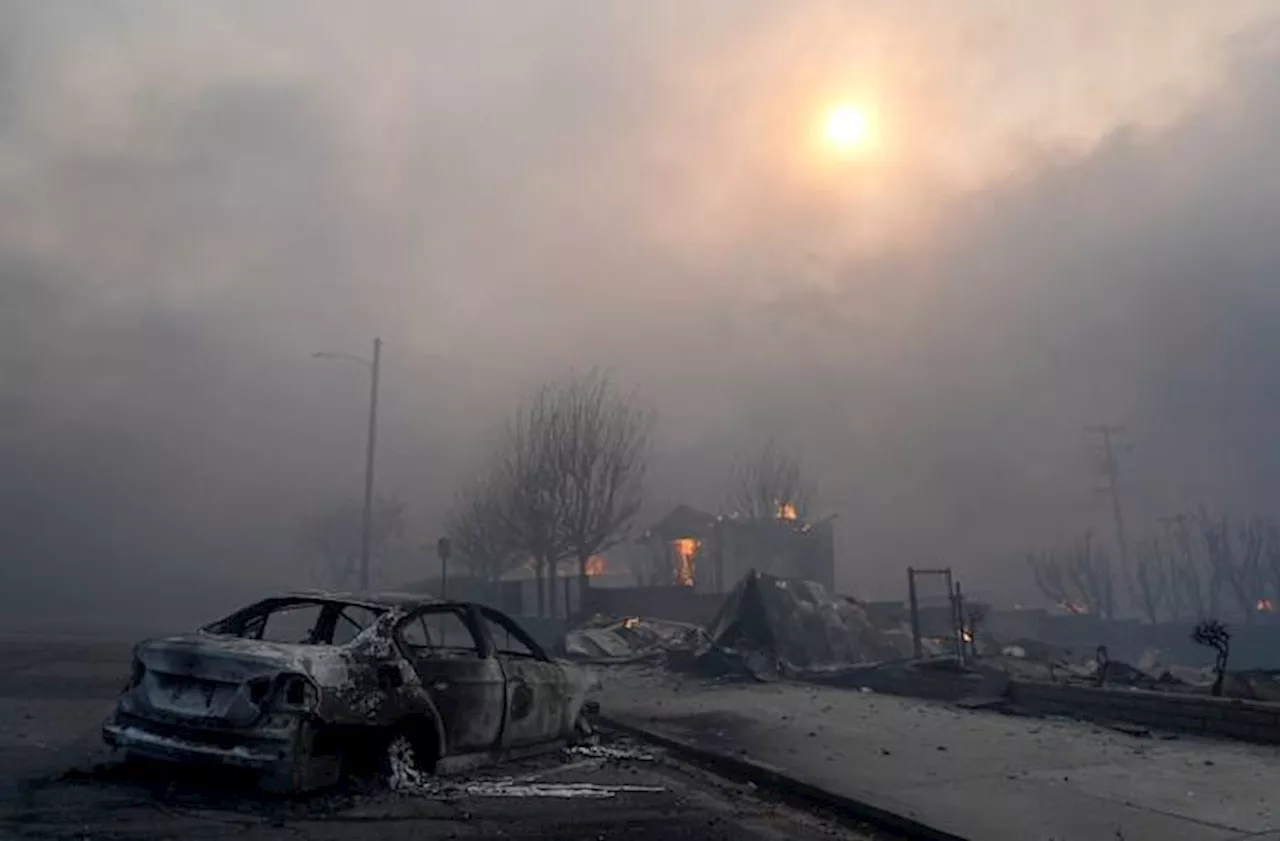 Wildfires Push Toxic Chemicals Into Drinking Water Systems, Posing Serious Health RisksA devastating combination of wildfires and climate change is forcing communities to grapple with the grim reality of contaminated drinking water. Experts warn that the toxic chemicals released from burning buildings and infrastructure pose a significant threat to public health.
Wildfires Push Toxic Chemicals Into Drinking Water Systems, Posing Serious Health RisksA devastating combination of wildfires and climate change is forcing communities to grapple with the grim reality of contaminated drinking water. Experts warn that the toxic chemicals released from burning buildings and infrastructure pose a significant threat to public health.
Read more »
 Wildfires Blanket Los Angeles in Smoke, Sparking Fear and DisruptionMultiple wildfires burning across Southern California have blanketed Los Angeles in an eerie haze of smoke, prompting evacuations and unsettling residents. The fires, fueled by dry conditions and strong winds, have scorched thousands of acres and destroyed homes and iconic landmarks.
Wildfires Blanket Los Angeles in Smoke, Sparking Fear and DisruptionMultiple wildfires burning across Southern California have blanketed Los Angeles in an eerie haze of smoke, prompting evacuations and unsettling residents. The fires, fueled by dry conditions and strong winds, have scorched thousands of acres and destroyed homes and iconic landmarks.
Read more »
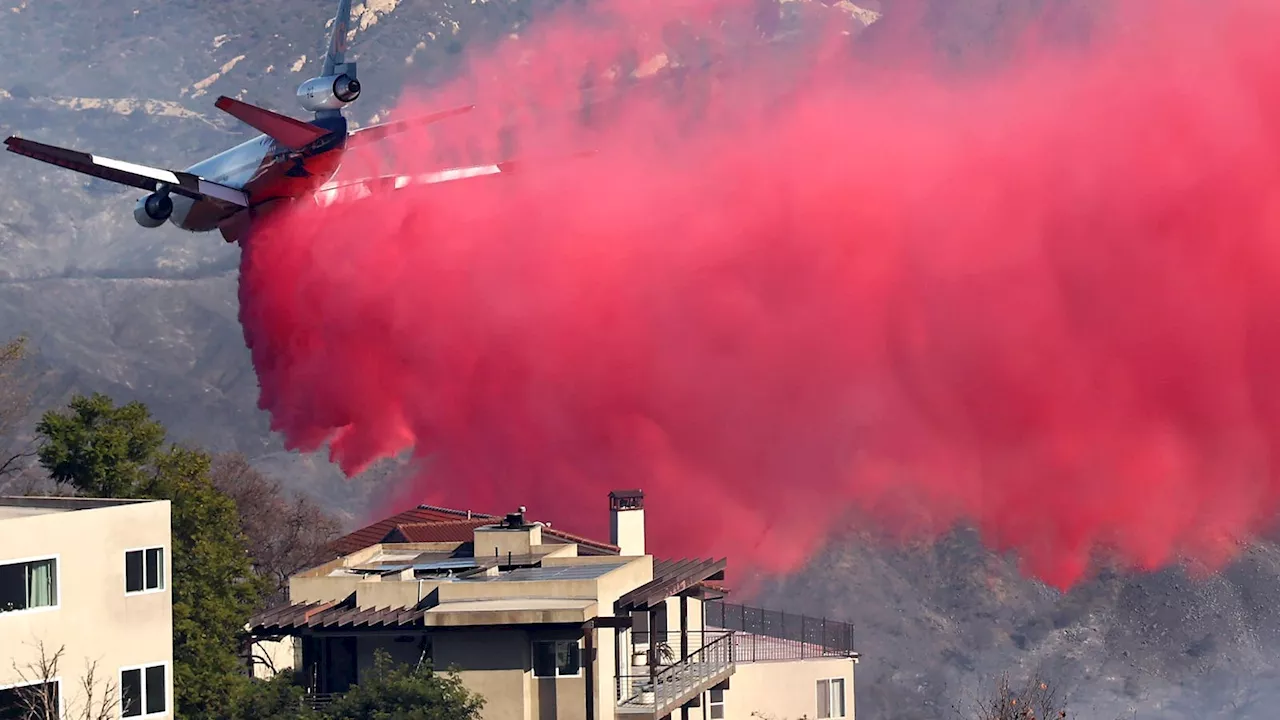 Wildfires Pose Threat to Food Safety: Smoke, Chemicals, and Heat Contaminate Food SuppliesWildfires, like those ravaging Los Angeles, create a serious risk to food safety. Smoke plumes carrying harmful pollutants can infiltrate food packaging, while heat and firefighting chemicals contaminate food and surfaces.
Wildfires Pose Threat to Food Safety: Smoke, Chemicals, and Heat Contaminate Food SuppliesWildfires, like those ravaging Los Angeles, create a serious risk to food safety. Smoke plumes carrying harmful pollutants can infiltrate food packaging, while heat and firefighting chemicals contaminate food and surfaces.
Read more »
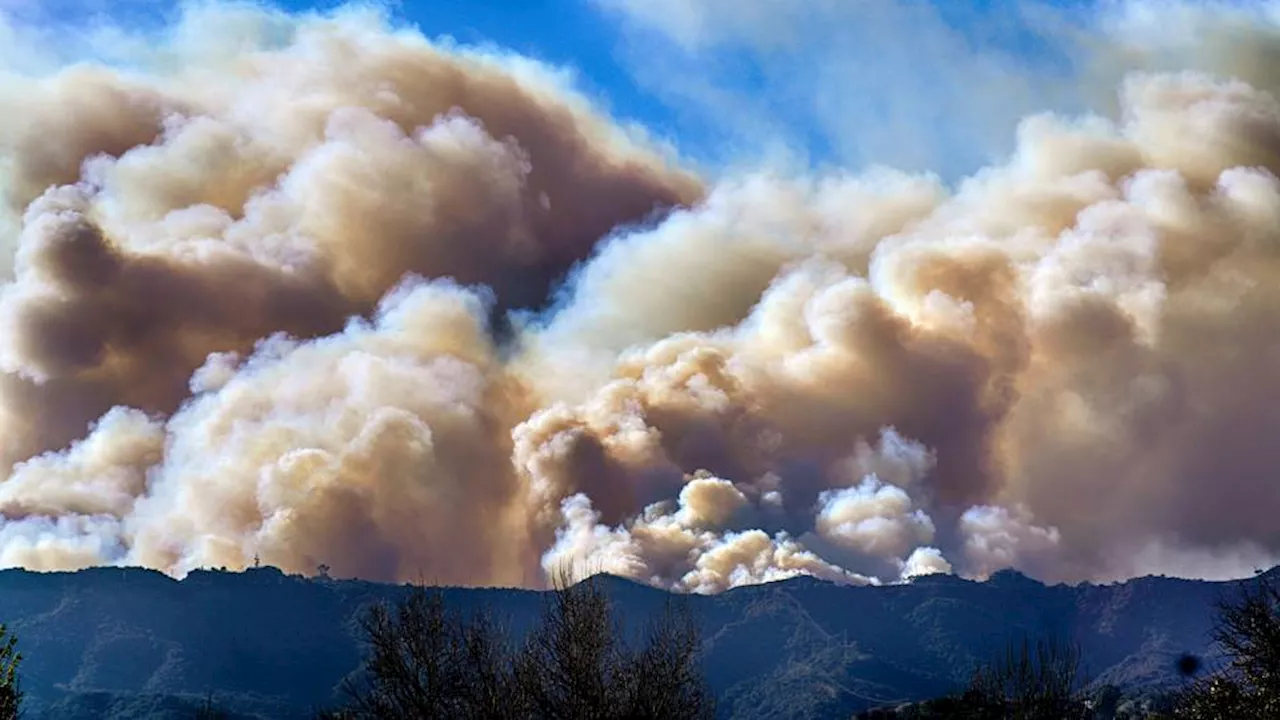 Toxic Wildfire Smoke Blankets Los Angeles, Public Health Emergency DeclaredMultiple wildfires burning around Los Angeles have sent toxic smoke into the air, prompting a public health emergency and warnings for residents to stay indoors. The blazes have destroyed homes, businesses, and vegetation, releasing harmful pollutants into the densely populated region.
Toxic Wildfire Smoke Blankets Los Angeles, Public Health Emergency DeclaredMultiple wildfires burning around Los Angeles have sent toxic smoke into the air, prompting a public health emergency and warnings for residents to stay indoors. The blazes have destroyed homes, businesses, and vegetation, releasing harmful pollutants into the densely populated region.
Read more »
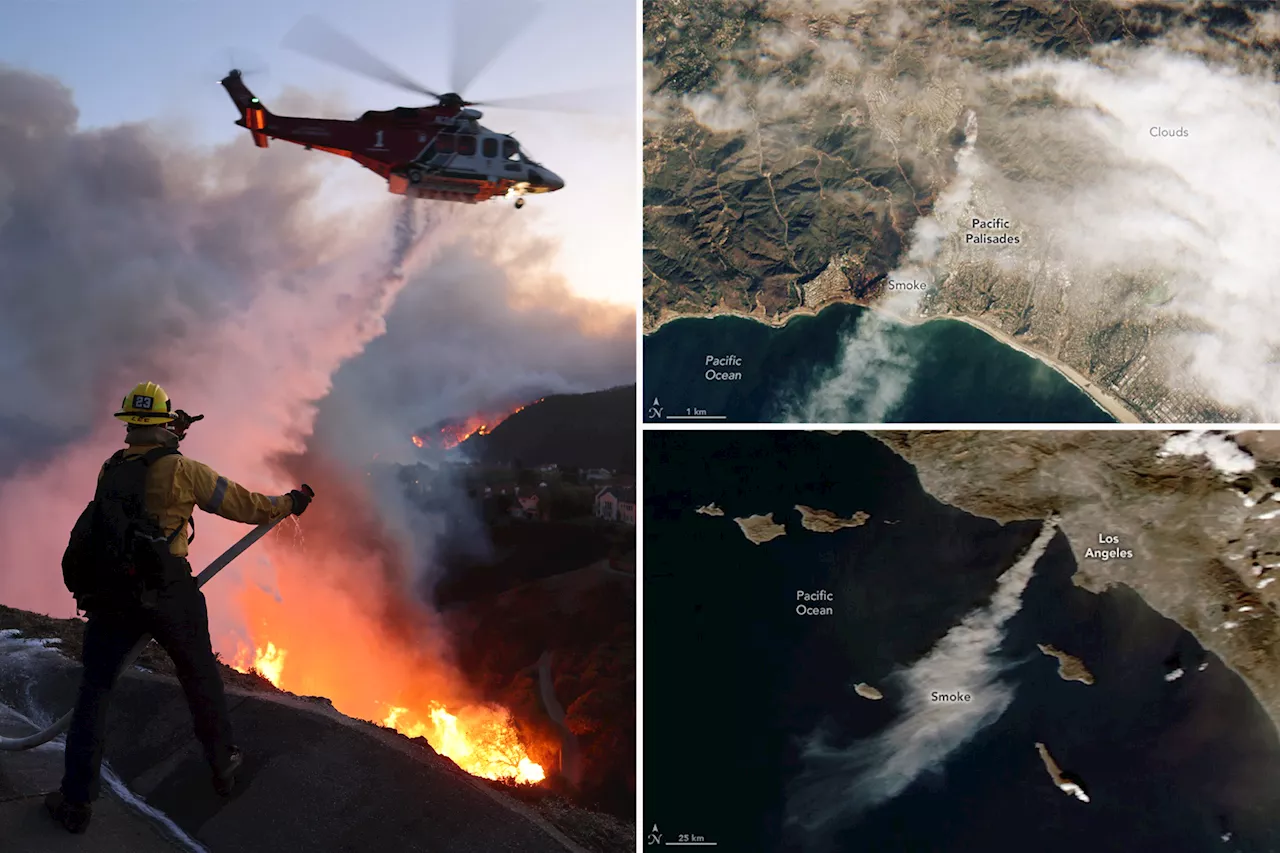 Smoke from LA wildfires is visible from space in grim satellite imagesSince Tuesday, multiple wildfires in Southern California have burned through at least 39,000 acres — an area nearly the size of Brooklyn — and firefighters have barely made a dent.
Smoke from LA wildfires is visible from space in grim satellite imagesSince Tuesday, multiple wildfires in Southern California have burned through at least 39,000 acres — an area nearly the size of Brooklyn — and firefighters have barely made a dent.
Read more »
